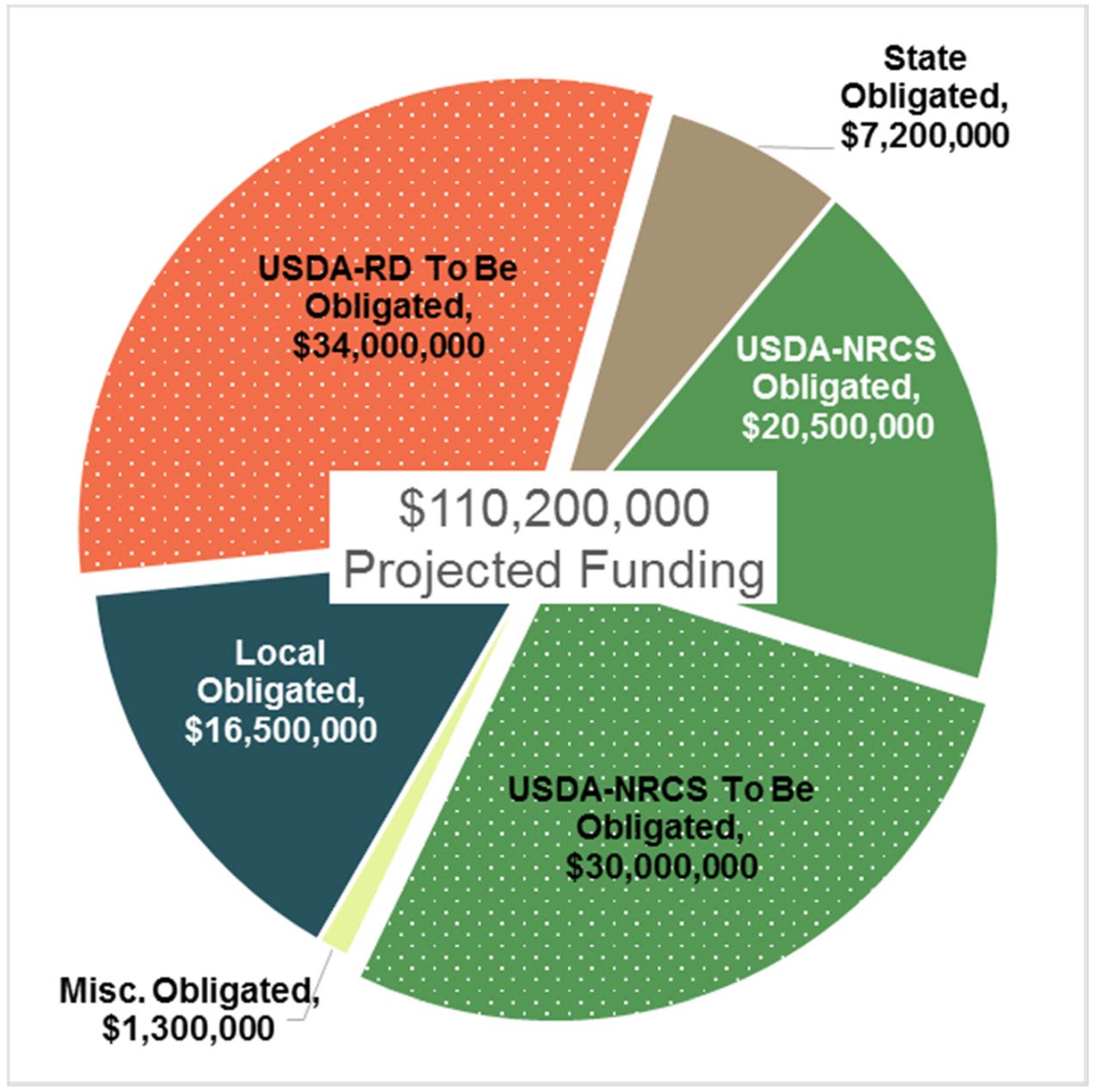With an overall project budget of roughly $110 million, the plan of finance to bring this project to reality includes a wide variety of local, state, and federal funds. It is anticipated that 16 different entities will participate in funding the project when completed. Integral parts of coordinating so many sources of money are communication, transparency and accuracy.
The primary source of funding for the project is the PL-566 program that was created by the Flood Control act of 1944 and the Watershed Protection Act of 1954. The PL-566 program is managed by the U.S. Department of Agriculture Natural Resources Conservation Service (USDA-NRCS). The East Locust Creek Reservoir (ELCR) is the largest PL-566 Watershed Lake ever built. In fact, it required special federal legislation to authorize its construction.
As part of the contractual agreement between the USDA-NRCS and the North Central Missouri Regional Water Commission (NCMRWC), three main budget categories are eligible for federal cost share, which will total approximately $50 million.
- USDA-NRCS Eligible Cost Share
- Land- up to 12.4% Federal PL-566 Funds
- Design/Planning- up to 100% Federal PL-566 Funds
- Construction- up to 75% Federal PL-566 Funds
The chart below summarizes the roughly $45 million already received from various project partners. It is a diverse combination of grants, local dollars, and in-kind work (reports developed for the project on behalf by varying agencies). This chart shows that local residents in conjunction with state and federal government have already provided a large amount of funding for this project.

The Anticipated Project Funding by Source Chart, is an estimate of funding options for the ELCR. This diverse combination of local, state, and federal funds will maximize the available programs to access the best terms for any loan dollars required.

In addition to the commonly used funding streams, the East Locust Creek Reservoir (ELCR) Project Team has developed a new and unique financing mechanism, the Revolving Conduit Financing Tool, and is working with U.S. Department of Agriculture Rural Development (USDA-RD), Missouri DNR, Missouri Legislators, and others to validate and implement our approach.
Revolving Conduit Financing Tool
The NCMRWC proposed a plan for capital and long-term financing to complete the project. The 10-county region already includes some of the highest water rates for water customers in the state of Missouri. Their high rates are largely due to small scattered water sources and the associated cost of producing small quantities and pumping water long distances to remote customers. The plan of finance must result in affordable water to ensure the long term success of the ELCR.
The plan makes possible the $36 million cost share that will be provided by the state and local entities. To utilize the full potential of the ELCR, a marketing plan that is based on providing affordable drinking water to a large number of communities. Ultimately, the plan prioritizes and creates a way to finance the costs associated with the reservoir and transmitting water throughout the region, by way of main pipelines.
The revolving conduit financing tool is based on the “Multipurpose Water Resources Program, Water Supply and Storage Projects”, 256.435-256.447 RSMo which is dependent on the State Legislature for funding.
For more information on this funding tool, see our one page description or our more in depth three page memo.

